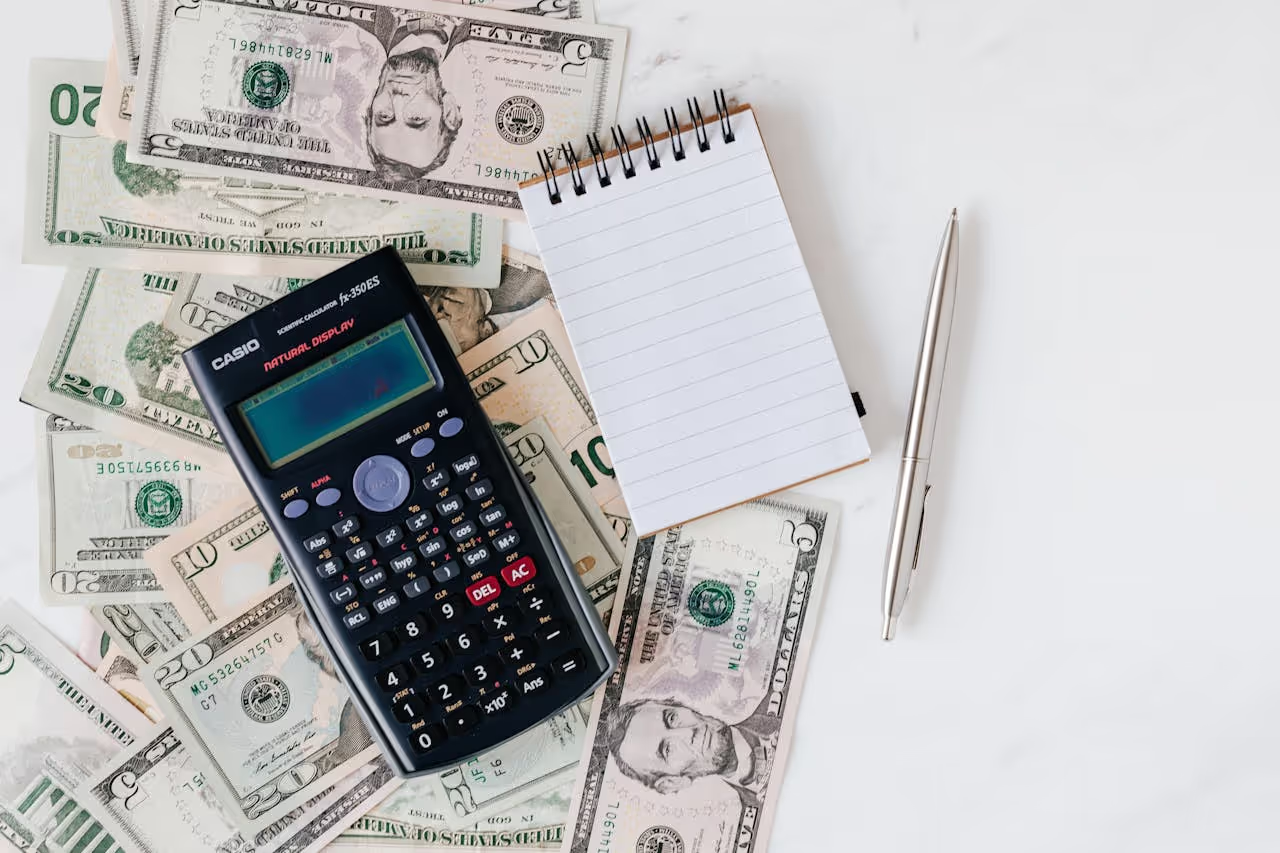Car Financing After Bankruptcy: Dealer Options in 2025
Undefined Car Financing After Bankruptcy: Dealer Options in 2025
Need a car after bankruptcy but hitting credit roadblocks at every turn? You are not alone. The short answer is yes, dealer financing is possible after bankruptcy, and many buyers rebuild their lives this way.
Most shoppers face the same pain points, higher rates, tighter terms, and limited vehicle choices at first. That is normal after a discharge or while in a repayment plan. With the right steps, you can still get reliable wheels and start rebuilding credit.
This guide explains when to apply, what dealers look for, and how terms differ between Chapter 7 and Chapter 13. You will see how timelines affect approval, what costs to expect, and how to lower them. You will also learn how to compare lenders, from franchise dealers to specialized finance partners.
If you filed Chapter 7, an auto loan after Chapter 7 usually works best after discharge, once new accounts start reporting. If you are in Chapter 13, some courts allow a purchase with trustee approval, as long as the payment fits your plan. Either path can work with clear proof of income, steady residence, and a practical budget.
Expect higher interest at first, since risk drives pricing. A down payment, a modest vehicle choice, and a short term can bring the total cost down. Adding a credit union quote, or a qualified co-signer, can also reduce the rate.
We will cover how to prepare proof of income, how to set a target payment, and how to spot fair offers. You will learn the difference between prequalification and approval, plus how to avoid surprise add‑ons. We will also flag red flags like yo‑yo financing and inflated fees, which you can learn to avoid with our guide on dealer financing secrets and how to negotiate dealer financing.
The goal is simple, make car financing after bankruptcy clear, fair, and doable. You will get a step by step plan to shop with confidence, compare offers, and protect your budget. By the end, you will know how to secure a smart car loan after bankruptcy and start rebuilding right away.
When Can You Get Car Financing After Bankruptcy? Understand the Timeline
Timing matters when you apply for car financing after bankruptcy. The path depends on your chapter and how quickly you can show stability. Lenders want proof that the hard part is behind you and that your budget can handle a new payment. The sooner you meet those checks, the sooner you can qualify for a car loan after bankruptcy at a fair total cost.
Short Wait After Chapter 7 Discharge
Chapter 7 wipes qualifying debts and closes faster, usually in four to six months. Once your case is discharged, many lenders will consider you for an auto loan after Chapter 7, especially if you can show steady income and a clean budget. Industry guides back this timeline. You can apply for a loan once your case is finalized, which typically takes a few months, according to Bankrate’s overview of post‑bankruptcy car loans.
Approval within months is possible if you prepare well. Lenders look for simple signals that risk is under control.
Stable income: Pay stubs or award letters that show reliable pay.
Manageable debts: Low existing payments and no new late marks.
Down payment: Even 5 to 10 percent improves the offer.
Reasonable car choice: Modest price, low miles, no luxury trim.
Real shoppers share similar timelines. Many report approvals 6 to 12 months after discharge, often with higher rates at first and better terms after some on‑time payments. You can see examples in this Reddit thread on car loans after Chapter 7 discharge. Another common theme is refinancing after a year of perfect payments once scores recover.
Speed helps, but patience can pay. If you can wait a few more months to add a positive credit card and a small installment account, you may shave points off the rate. Keep inquiries limited, compare at least two offers, and skip extras you do not need.
Quick checklist before you apply after Chapter 7:
Pull your reports to confirm accounts show discharged.
Save a down payment and set a firm max payment.
Get a clean, simple proof of income file ready.
Prequalify with a credit union and a dealer, compare both.
Longer Process in Chapter 13 Repayment
Chapter 13 runs on a 3 to 5 year plan. You keep paying debts under court oversight, and any new loan must fit your budget. That is why the process takes longer. You must show that the car is necessary for work or family needs, that the payment is affordable, and that the new debt will not derail your plan.
In many districts, you need trustee or court approval for a new loan while still in repayment. Lenders also know this, so they often ask for a letter or order that permits the purchase. Consumer guidance explains that plans last several years and control how you handle secured debts like cars, which is why coordination is key. For a useful primer on how vehicles fit within Chapter 13, review this overview of cars and Chapter 13 plans. You can also see a clear comparison of Chapter 7 and Chapter 13 timing in Experian’s guide to getting a car loan after bankruptcy.
Why wait 18 to 24 months after filing? Two reasons stand out:
Payment history: A year or more of on‑time trustee payments shows discipline.
Score recovery: Scores often rise once the plan is established and no new late marks appear.
If you must buy during the plan, keep it simple. Request a modest amount, pick a reliable used model, and document why you need the car. Show proof of insurance, income, and a payment that fits your plan. If you can wait, time will improve your terms and lower your total interest cost.
Key moves while in Chapter 13:
Make every plan payment on time, no exceptions.
Build a cash cushion for taxes, maintenance, and insurance.
Set a target monthly car payment that fits inside your budget.
Collect approval documents early to avoid delays.
Whether you filed Chapter 7 or Chapter 13, the goal is the same. Show stability, limit risk, and choose a car that serves your needs without stress. That is how car financing after bankruptcy becomes affordable and sustainable.
Chapter 7 vs. Chapter 13: How They Affect Your Auto Loan Options
 Photo by Саша Алалыкин
Photo by Саша Алалыкин
Choosing between Chapter 7 and Chapter 13 changes how you keep a car and how lenders view you. Each chapter shapes your risk profile, your monthly cash flow, and your timeline for new credit. If you plan on car financing after bankruptcy in 2025, match your chapter to your next steps so you get fair terms and protect your budget.
Quick context helps. Chapter 7 clears unsecured debts fast, but you could lose a car with equity above your exemption or one with past‑due payments you cannot catch up. Chapter 13 restructures debts, spreads arrears over time, and may improve the math on an existing auto loan. For a neutral primer on how cars are handled in both chapters, see Experian’s overview of what happens to a car during bankruptcy. Nolo also explains how keeping a car often hinges on exemptions, payments, and contract choices like reaffirmation or redemption in Chapter 7, which you can review here: Can you file bankruptcy on a car loan and keep the car?
A quick snapshot of how lenders may see each path:
| Factor | Chapter 7 | Chapter 13 |
|---|---|---|
| Main goal | Debt wipeout | Debt reorganization |
| Car at risk? | Yes, if not exempt or payments fall behind | Lower risk if plan cures arrears |
| New loan timing | Often after discharge | Possible during plan with approval |
| Rate outlook | Higher at first, then improves with on‑time pay | Starts higher, improves with plan compliance |
| Lender view | Clean slate, short history post‑discharge | Structured budget, court oversight |
Pros and Cons of Chapter 7 for Car Buyers
Chapter 7 can be a reset for buyers who need a clean slate. You clear eligible unsecured debts, which can free up cash flow for a modest car payment. Many shoppers see faster movement in credit scores once the case closes and new positive lines report. The tradeoff is risk to a nonexempt vehicle and tighter review on any new loan.
Key benefits that matter for an auto loan after Chapter 7:
Debt wipeout: Less monthly debt can make room for a car payment that fits.
Faster timeline: Many cases close in four to six months, so you can apply sooner.
Simpler budget: Fewer accounts to manage can help you keep perfect payment history.
Score rebound: New on‑time credit can push scores up within months.
Risks and limits to keep in mind: higher interest rates, limited inventory, and tighter terms. These factors emphasize the importance of understanding how to negotiate dealer financing effectively.
Possible car loss: If the car has too much equity, or you are behind and cannot cure, the trustee or lender may take it. Nolo’s guide on keeping a car in bankruptcy explains exemptions, reaffirmation, and redemption rules.
Higher initial rates: Fresh approvals come with risk pricing. Expect higher rates for the first year.
Tighter vehicle choices: Lenders prefer lower prices, lower miles, and basic trims right after discharge.
More scrutiny: Underwriters review income, residence stability, and proof of insurance closely.
How this ties to car financing after bankruptcy:
Plan a modest down payment. Even 5 to 10 percent can cut the rate and payment.
Keep the term short. Aim for 48 to 60 months to control total interest.
Choose a reliable used vehicle. Avoid luxury features that inflate price and risk.
Add a credit union quote to compare with dealer financing. It keeps pricing honest.
Build two new positive lines, then consider refinance after 12 on‑time payments.
Practical example: You exit Chapter 7 in May, add a secured card and a small credit‑builder loan in June, then apply in September for a $14,000 used sedan with 10 percent down. You accept a higher rate now, drive the car, stack perfect payments for a year, and refinance once your score improves.
Why Chapter 13 Might Help Keep Your Current Car Loan
Chapter 13 is built to reorganize debt, which can be a lifeline if you need the car for work and are behind on payments. The plan can spread arrears over 36 to 60 months, so you keep the vehicle while you catch up. In some cases, if the loan is older and the balance is higher than the car’s value, the plan can reduce what you pay to the car’s fair value and adjust the interest rate. Experian covers how balances and rates may change under Chapter 13 in its guide on what happens to a car during bankruptcy.
How Chapter 13 can protect or improve your car situation:
Cure arrears: Past‑due amounts move into the plan, which can stop repossession.
Lower rate potential: Courts may set a reasonable rate on the restructured loan.
Balance right‑sizing: If you owe more than the car is worth and qualify, you may pay closer to value.
Steady oversight: Trustee review helps keep the payment realistic inside your budget.
What it means for new financing:
Approval path: Many courts require trustee or court approval before you take on a new car loan during the plan.
Trust building: Lenders want proof of on‑time plan payments, usually 12 months or more.
Conservative terms: Expect smaller loan amounts, basic vehicle choices, and higher rates at first.
Timing edge: If you can wait until you complete the plan or get closer to discharge, you may see better pricing.
Steps to gain lender confidence while in Chapter 13:
Make every plan payment on time. Missed payments sink approvals.
Document stable income and set a firm max payment that fits your plan.
Pick a modest, reliable vehicle that keeps insurance and upkeep low.
Get written approval before shopping to avoid delays at the dealership.
Keep the loan amount lean. Smaller balances get faster yes decisions.
Bottom line for car loan after bankruptcy: Chapter 7 often suits buyers who need a quick reset and are ready to buy a modest car after discharge. Chapter 13 can be better if you must save your current car, catch up on arrears, or reshape a costly auto loan inside a court‑guided plan. In both cases, clean documentation, a realistic budget, and a car that matches your income will drive the best offer.
Best Lenders for Car Financing After Bankruptcy in 2025
You can get approved for car financing after bankruptcy if you know where to look. Aim for lenders that price risk fairly, explain terms clearly, and report to all three bureaus. Start with credit unions and community banks for the best shot at a lower rate, then compare quotes with online and dealer specialists that work with subprime credit. The goal is simple, secure a safe car, keep payments in budget, and build positive history fast.
Credit Unions and Banks That Offer Second Chances
Local credit unions often lead the pack for approvals after a discharge. They know their members, review real income and budget details, and can price loans more gently than many national banks. Many also offer car-buying services and rate discounts for automatic payments or bundled accounts.
What makes credit unions strong for an auto loan after Chapter 7:
Lower rates: Member-owned structure often leads to better pricing than finance companies.
Flexible underwriting: Human review helps if your credit report shows a recent bankruptcy but clean pay since.
Member support: Counselors can help set a smart payment and suggest the right term.
Membership does matter. Some credit unions require you to live or work in a certain county, work for a sponsor employer, or join an affiliated group. Most allow easy membership through a local association or small donation. Approval depends on income, debt load, and a realistic car choice. With a down payment and steady job history, many members see approvals within months of discharge.
How to boost success rates post-bankruptcy: Prequalify, save a down payment, show steady income, and check your reports for errors. These steps are crucial for navigating the dealer financing process effectively.
Join a credit union before you shop, then open a savings account.
Bring 60 to 90 days of pay stubs and proof of residence.
Target a payment that fits 10 to 15 percent of take-home pay.
Keep the term at 48 to 60 months, and skip luxury trims.
Compare at least one bank or marketplace guide while you shop. You can scan current lender options by credit tier in NerdWallet’s roundup of auto loan rates in 2025. For a clear overview of how lenders view bankruptcy and which routes work after a discharge, review Bankrate’s guide to getting a car loan after bankruptcy.
Smart moves with a credit union or bank:
Start small: Pick a reliable used car that keeps total cost low.
Put money down: Even 5 to 10 percent can lower the rate and payment.
Build early wins: One year of perfect payments can set up a refinance.
Example: You join a local credit union, save $1,500, and bring a letter from your employer showing stable hours. You choose a $12,000 sedan, accept a higher first-year rate, and ask for a 48-month term. After 12 on-time payments and a small bump in score, you request a rate review or refinance.
Online and Dealer Financing Specialists
Online platforms and select dealers can approve subprime borrowers fast, including buyers with a fresh discharge or those in Chapter 13 with permission. Speed and convenience are the draw. You can prequalify, preview payment ranges, and shop inventory in one place.
Who to consider in 2025:
Carvana: Online dealership with prequalification and instant inventory pairing. Carvana markets approvals for a wide range of credit, including past bankruptcy. Learn how their process works on the Carvana financing page and compare terms before you commit.
RoadLoans: Online lender that focuses on shoppers with challenged credit. You can prequalify with a soft pull, then take an approval to a partnered dealer. Start at RoadLoans.
Dealer finance centers: Franchise groups and local stores, such as Ken Ganley Lincoln, often have subprime programs with multiple lenders on tap. You walk in with income docs, and they send your file to matched lenders for a same-day answer.
Pros of online and dealer specialists:
Fast yes or no: You can see options the same day.
Matched programs: They know which lenders will accept your profile.
Inventory fit: They steer you to vehicles that meet lender caps and guidelines.
Watchouts to keep the total cost fair: Hidden fees, high rates, long terms, and pushy add‑ons. Being aware of these points helps you navigate the dealer financing secrets and avoid scams.
Review the APR, term, add-ons, and fees before signing.
Avoid long terms that inflate interest cost.
Skip extras you do not need, such as overpriced warranties or gap from the dealer if you can buy it cheaper elsewhere.
Useful comparison resources:
Read this independent Carvana auto loan review from LendingTree for pros, cons, and rate notes: 2025 Carvana Auto Loan Review.
If you want a wider view of subprime options, this guide to bad credit car loans lists common lenders and approval standards: Bad Credit Car Loans: Best Subprime Auto Lenders (2025).
How to shop this path with confidence:
Prequalify with one online platform and one credit union. Compare APR and total interest.
Lock your budget first. Cap the payment and stick to it on the lot.
Bring a down payment. Cash shows commitment and lowers risk.
Keep documents ready. Pay stubs, bank statements, and insurance proof speed up approval.
Bottom line for a car loan after bankruptcy in 2025: get one quote from a member-focused lender, then compare it against a trusted online or dealer specialist. Pick the offer with the lowest total cost, clear terms, and a path to refinance after 12 solid payments. That mix gives you practical car financing after bankruptcy while you rebuild credit the right way.
Interest Rates and Down Payment Needs for Bankruptcy Auto Loans
 Photo by Nicola Barts
Photo by Nicola Barts
Rates are higher after bankruptcy because lenders price for risk. Your credit report still shows the case, your recent history may be thin, and underwriters want a larger cushion. The good news, you can still secure car financing after bankruptcy with a smart plan. Two levers matter most, the rate you accept and the cash you put down.
Industry snapshots help set expectations. Average auto loan rates vary by credit tier and vehicle type, which you can see in this current overview of average auto loan rates. With a recent bankruptcy, your rate will likely sit on the higher end at first. That is normal, and there are clear ways to improve the offer.
Why Rates Are High and How to Negotiate Them
A recent bankruptcy signals higher default risk. Lenders respond by raising APR, asking for more money down, or capping the loan amount. Several factors push rates up, and you can address many of them before you sign.
Why lenders raise rates after bankruptcy:
Recent derogatory mark: Bankruptcy ties to higher loss odds in models.
Thin positive history: Few active, on-time accounts leave less proof of stability.
High loan-to-value: Little or no down payment means the lender carries more risk.
Tight budgets: Higher debt-to-income or unstable income raises concern.
Negotiation tactics that work: Bring competing offers, be ready to walk, ask about rate buy-downs, and challenge add‑ons. These are all key strategies to negotiate dealer financing effectively and save money.
Compare at least two firm offers. Get one from a credit union and one from a dealer program. Rate trends and approval basics for post-bankruptcy buyers are covered in Bankrate’s guide.
Add a qualified co-signer. A strong co-signer can drop APR and open better terms.
Bring a real down payment. Cash reduces risk, which can lower rate and payment.
Choose the right car. Lower price, lower miles, and mainstream brands score better with underwriters.
Show stability. Two months of pay stubs, proof of residence, and a clean bank statement help offset risk.
Time your application. Keep rate shopping inside a short window to limit score impact.
Consider waiting 60 to 120 days. Add one or two positive accounts and on-time payments, then reapply. Many lenders respond with a better offer once a little new history is on file.
Want a quick benchmark before you negotiate? Review current market context and rate drivers in Experian’s look at auto loan rates and financing for 2025. Use that as your backdrop when you ask a lender to match or improve your APR.
Practical script you can use at the desk:
“I have a competing preapproval. If you can match the APR with a 48-month term and no add-ons, I will sign today.”
“With 15 percent down and autopay, what is your best rate? I am ready to finalize if the total interest drops.”
How Much Down Payment Do You Really Need?
You do not always need a huge down payment, but more cash up front almost always improves the offer. Many lenders ask for at least 10 percent when you apply soon after bankruptcy. Some ask for more if the vehicle is expensive, the miles are high, or income is variable. Experian notes that a 10 percent down payment is common for recent bankruptcy buyers, and more can help your approval odds. See details in Experian’s guide, Can I Get a Car Loan After Bankruptcy?
Here is how different down payment amounts change the numbers on a $20,000 car:
| Down payment | Cash needed | New loan amount | Why it helps |
|---|---|---|---|
| 0% | $0 | $20,000 | Highest risk, highest APR, bigger payment |
| 10% | $2,000 | $18,000 | Common target after bankruptcy, better approval odds |
| 15% | $3,000 | $17,000 | May lower APR and expand lender options |
| 20% | $4,000 | $16,000 | Strongest terms, more equity, faster path to refinance |
Example to put it in context:
You pick a $20,000 sedan. With 10 percent down, you bring $2,000, finance $18,000, and may shave points off the APR compared with zero down. If you can push to 15 percent, the lender sees lower risk and may cut the rate again or approve a shorter term.
Smart ways to save before you apply:
Park cash in a separate account: Keep your down payment away from daily spending.
Automate transfers: Move a set amount right after payday.
Use tax refunds or bonuses: Apply windfalls to your down payment fund.
Trim insurance and subscriptions: Redirect the monthly savings into your car fund.
Sell unused items: Small sales add up fast when you have a clear target.
Target setting for buyers rebuilding after Chapter 7:
If you need a car now, aim for 10 percent down and a 48 to 60 month term on a modest used car. That often unlocks a fair first approval for an auto loan after Chapter 7.
If you can wait two to three months, push for 15 percent down, add one new positive trade line, and come back with a stronger file. That move can cut your APR and total interest.
One more tip for faster approval:
Ask the lender which down payment threshold changes the program tier. Sometimes adding $500 to $1,000 crosses an internal cutoff that improves the APR or waives a fee.
Bottom line, bigger down payments and cleaner files get better rates for a car loan after bankruptcy. Combine a solid cash stake, a practical vehicle choice, and one or two competing offers. That mix reduces risk for the lender and lowers your cost, which is the core goal of smart car financing after bankruptcy.
Rebuild Your Credit Fast: Strategies to Qualify for Car Financing After Bankruptcy
 Photo by Erik Mclean
Photo by Erik Mclean
Fresh credit wins can show up within weeks, not years. With a tight plan, you can lift your score enough to qualify for car financing after bankruptcy and keep costs in check. Start with simple habits that scoring models reward right away, then lock in long-term routines that protect your gains.
Quick Wins for Credit Improvement Post-Bankruptcy
You do not need a complex strategy. The fastest score boosts come from low balances and perfect payments that hit every month.
Keep utilization very low: Use less than 10 percent of your credit limits for the fastest lift. Never cross 30 percent. Example: a $500 limit means staying under $50, and never above $150.
Make every payment on time: Payment history drives most of your score. Set autopay for at least the minimum, then make extra payments to clear balances. Guidance from Equifax stresses that consistent on-time payments are a core factor in recovery, which you can review in How to Repair Credit History After Bankruptcy.
Become an authorized user on a strong account: Ask a trusted family member with a long, clean credit card to add you. Pick a card with low utilization and no late payments. This can add age and positive history to your reports. For a broader list of tactics, see Experian’s guide on how to build credit after a bankruptcy.
Use one simple starter line: If needed, add a secured credit card with a small limit. Keep charges tiny, pay in full each month, and let the account report for 60 to 90 days before you apply for a car loan.
Limit hard inquiries: Rate shop inside a short window. Too many scattered pulls can slow your recovery.
Strong fast-start checklist:
Turn on autopay for every bill.
Keep balances near zero on all cards.
Add one authorized user spot on a clean, low-use card.
Avoid new applications unless they add clear value.
Tie it back to your goal: These moves reduce risk in the eyes of lenders, which helps you qualify for a car loan after bankruptcy with a lower APR and fewer hoops.
Long-Term Habits to Secure Better Loan Terms
Short-term wins get you in the door. Long-term habits keep your cost low and set you up to refinance after a year of perfect history.
Avoid new debt that does not grow your score: Skip retail cards, payday loans, and buy-now-pay-later balances. Keep your active accounts few, clean, and low use. Investopedia highlights the impact of low utilization and timely payments over time in 11 steps to rebuild your credit after bankruptcy.
Build a real savings buffer: Aim for one month of expenses in a separate account, then grow to three months. Cash covers repairs, tires, and insurance hikes so you never miss a payment. Lenders reward stability, and a cushion prevents surprise late marks that raise your APR.
Monitor your reports and scores on a schedule: Pull your credit reports at least once a year, and your scores quarterly. Fix reporting errors fast, like accounts that should show discharged. Equifax provides a clear overview of rebuilding steps and the role of clean reporting in How to Repair Credit History After Bankruptcy.
Keep old positive accounts open: Account age matters. If there is no annual fee, keep seasoned lines open and active with a small charge each month.
Use clear payment rules: Follow the 15 and 3 method. Pay most of your balance 15 days before the statement closes, then a small top-off 3 days before, to keep reported balances low.
Set a refinance trigger: After 9 to 12 months of on-time auto payments and low utilization, ask lenders for a rate review. If your score has climbed and your debt is steady, you can often cut your APR.
Key takeaways for car financing after bankruptcy:
Consistency beats speed: Small, steady wins build a file lenders trust.
Cash protects your report: Savings prevents late payments, which keeps terms improving.
Clean data wins approvals: Accurate reports and low utilization unlock better offers on an auto loan after Chapter 7 and beyond.
Stay focused on these habits and you will see steady score growth. That progress turns into real savings the next time you finance, whether you are buying now or refinancing the car you already drive.
Real Stories: Success with Car Financing After Bankruptcy and Typical Timelines
 Photo by Antoni Shkraba Studio
Photo by Antoni Shkraba Studio
Real buyers move from discharge to approval faster than most expect. With clean documents, a modest vehicle, and a bit of cash down, many secure car financing after bankruptcy within months. The timelines below come from borrower reports and attorney guidance, plus common lender practices in 2025.
Chapter 7: What Buyers Report
Chapter 7 offers a quick reset. Once the court closes your case, lenders can consider your application. Many shoppers see approvals in weeks, especially with steady income and a down payment.
What real buyers share: Focus on stability, pre-approval, and a modest car choice. These steps streamline the dealer financing process and increase approval odds.
Approvals within days to a few months after discharge when files are clean and the car choice is practical. A Midwest bankruptcy firm confirms that some lenders approve loans right after a Chapter 7 is finalized, which matches buyer results in the field. See the overview on timing in Life after bankruptcy: Qualifying for an auto loan.
Early approvals usually carry higher APRs, then improve after 6 to 12 months of perfect payments. Community reports echo this trend, such as rate and approval stories in Post Bankruptcy Auto Loan success?.
Buyers who wait 60 to 120 days after discharge, add a secured card, and keep balances near zero often get better offers. Some users point to 6 to 12 months for “decent” terms, which aligns with lender risk models. See a typical range in this thread, How long after declaring bankruptcy can you get a decent car loan?.
Practical playbook for an auto loan after Chapter 7:
Bring two months of pay stubs, a utility bill, and proof of insurance.
Target 10 to 15 percent down on a reliable used car.
Keep the term at 48 to 60 months to control total interest.
Get a credit union quote and a dealer quote, then pick the lowest total cost.
Chapter 13: Timelines That Worked
Chapter 13 takes longer by design. You are in a court‑supervised plan for 3 to 5 years, so most lenders want to see on‑time trustee payments and written approval for a new car.
Patterns that lead to success:
Many buyers wait 12 to 24 months after filing before seeking a loan. They show perfect plan payments and submit a simple, necessary request for a modest vehicle.
When a purchase cannot wait, buyers ask the trustee for approval, cap the loan amount, and choose a basic car that fits the plan. Lenders often ask for the court order before they finalize terms.
Rates start high, then trend down once you hit 12 months of on‑time auto payments on the new loan.
Keys that help inside a Chapter 13 plan:
Document need and payment fit. Keep the ask modest.
Prepare a quote for insurance, since that cost must fit the budget.
Bring a down payment. Smaller balances win faster approvals.
Typical Timelines: What to Expect by Situation
Timelines vary based on credit steps, income proof, and vehicle choice. Use this quick view to set expectations and plan your next move.
| Situation | Typical timeline to approval | Notes that improve odds |
|---|---|---|
| Chapter 7, just discharged | Same week to 2 months | Strong income docs, 10% down, modest used car |
| Chapter 7, building for better terms | 3 to 6 months post‑discharge | Add secured card, keep balances near zero, compare two offers |
| Chapter 13, mid-plan with approval | 12 to 24 months after filing | Trustee approval in hand, basic car, tight budget fit |
| Refinance after first approval | 9 to 12 on‑time payments | Score recovery plus equity can cut APR |
Example that mirrors many buyers:
You discharge in May, open a secured card in June, and keep utilization under 10 percent. In August, you bring 12 percent down on a $13,000 sedan. You accept a higher APR now and set autopay. After 12 perfect payments, you request a refinance and drop the rate.
What Speeds Up Approvals Across Both Chapters
A few simple moves raise success rates and lower costs on a car loan after bankruptcy. These apply whether you are fresh from discharge or deep into a plan.
Tight budget fit: Cap the car payment at 10 to 15 percent of take‑home pay.
Real down payment: 10 to 20 percent changes lender risk and can unlock better programs.
Modest vehicle: Mainstream, reliable, and low miles beats flashy and pricey every time.
Clean bank activity: No overdrafts for 60 days helps underwriting.
Short rate shopping window: Keep all pulls inside 14 days to protect scores.
Two quotes minimum: A credit union and a dealer specialist keep pricing honest. You can cross‑check common approval timelines and rate patterns in community results like Post Bankruptcy Auto Loan success?.
Real Voices, Real Expectations
First‑person stories often echo the same theme. Approvals can happen soon after discharge if you pick a practical car and bring cash. Better terms arrive after a short stretch of clean payments and low balances. Attorney notes also confirm quick post‑discharge approvals in many cases, as covered in Life after bankruptcy: Qualifying for an auto loan. Community threads back up the timeline that “decent terms” often need a few months of rebuilding, seen here in How long after declaring bankruptcy can you get a decent car loan?.
The takeaway is simple. Car financing after bankruptcy is common when you show stability and keep the numbers conservative. Set your payment cap, bring a down payment, choose a reliable car, and keep your file spotless. That path gets you driving sooner and sets you up for a lower rate next year.
Conclusion
Dealer financing after bankruptcy is realistic with the right timeline, lender, and prep. Focus on stability, a modest vehicle, and clean documents. If you finished Chapter 7, many buyers secure an auto loan after chapter 7 soon after discharge with income proof and 10 to 15 percent down. If you are in Chapter 13, approvals often need trustee or court signoff, a basic car, and a tight budget fit. Either way, compare a credit union quote with a trusted dealer specialist, keep the term reasonable, and set a refinance goal after 9 to 12 on time payments. Understanding the entire dealer financing process is key to success.
Start rebuilding today. Keep balances low, automate every bill, and add one simple trade line if needed. Pull your reports to confirm accurate updates and remove errors. A thoughtful plan trims rate, reduces total interest, and protects your budget on a car loan after bankruptcy.
Take the next step now. Share your story or tips in the comments to help other readers. If you are ready to shop, visit lender and dealer sites for soft pull prequalification and clear payment estimates. If your situation is complex, speak with a financial advisor or your bankruptcy attorney to align the purchase with your plan.
You are closer than you think. With a practical car choice, a real down payment, and steady payments, you can regain mobility and rebuild credit with confidence.





